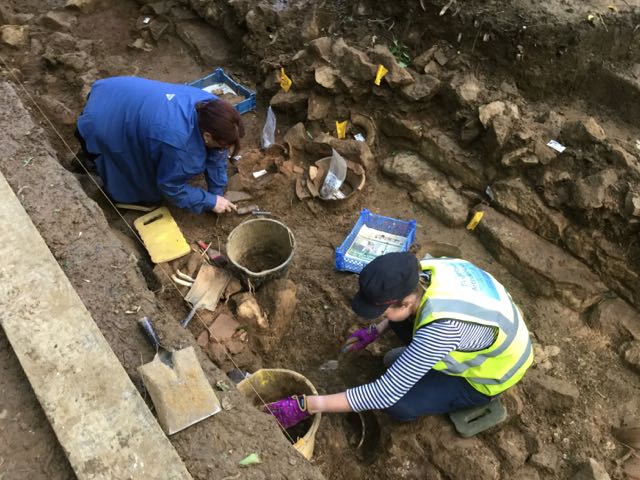
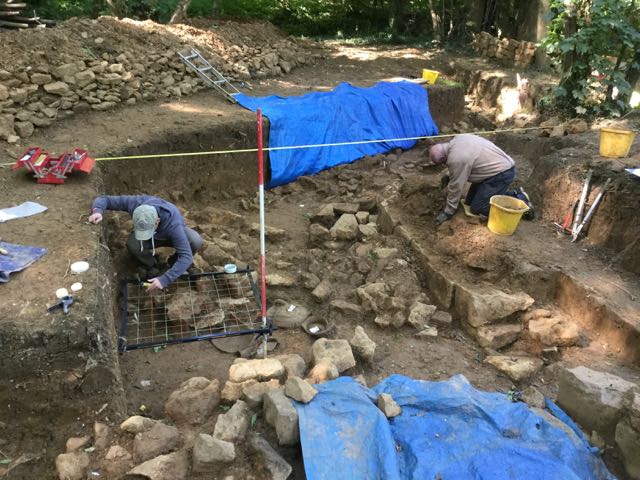
Elaine and Helen trying to work out which pot is which whilst Adam gets on and draws rubble in preparation for...
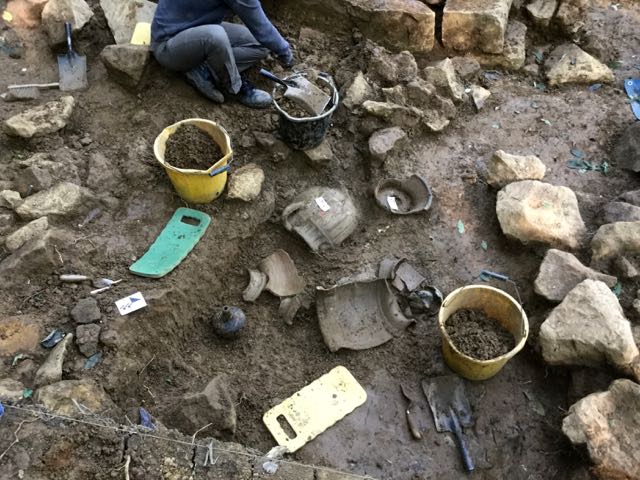
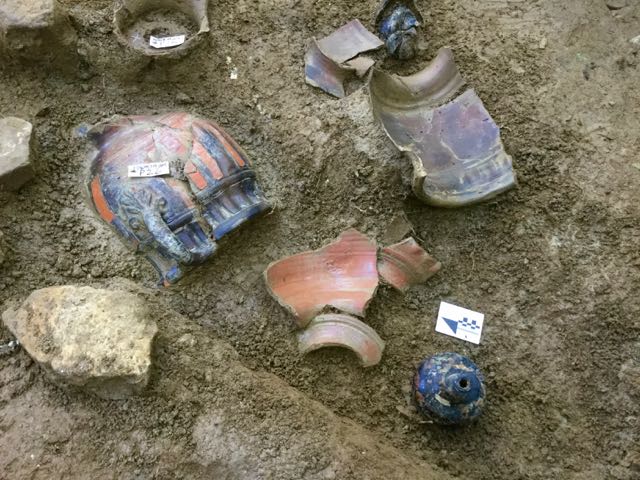
... lifting it to reveal another amazing assemblage of pots and bottles.
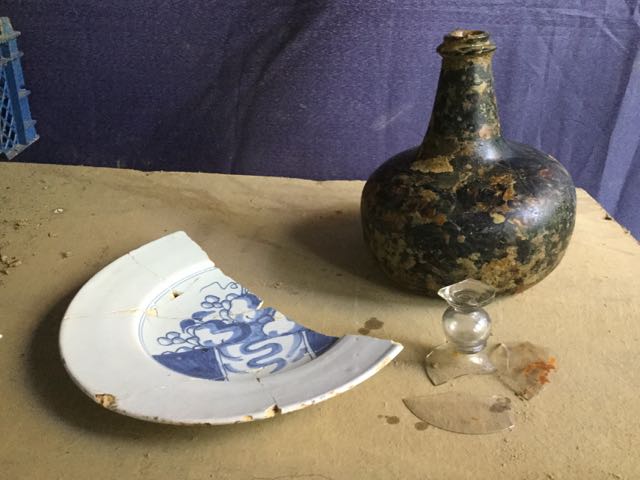
The complete picture, the wine bottle, the remains of a goblet and a plate... for serving nibbles?
Unfortunately a number of
commercial projects rather interfered with the Hanwell timetable, some
more relevant than others. Particularly challenging was the week spent
down at Crowcombe in Somerset where, ably assisted by Elaine, we
undertook a massive amount of clearance in order to record an
impressive and long lost collection of cascades and a beautify ul
bridge all dating from the eighteenth century.
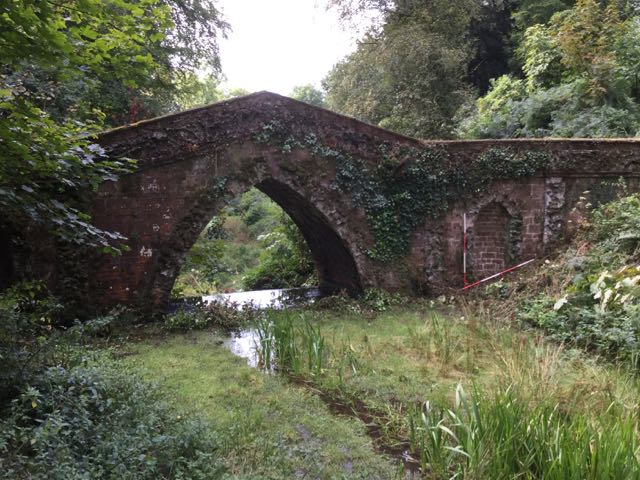
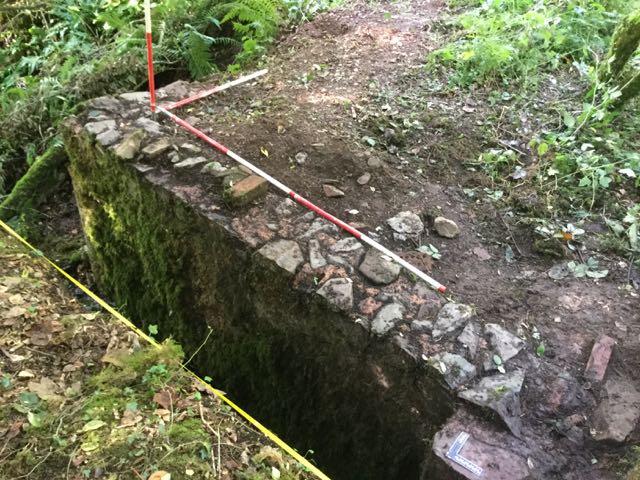
The bridge. this was almost completely buried under rampant vegetation until we took a bill hook to it. Our other discovery, further down stream, a small wheel pit and seating, probably for a water pump.

A former cascade left dry by a re-working of the water supply.
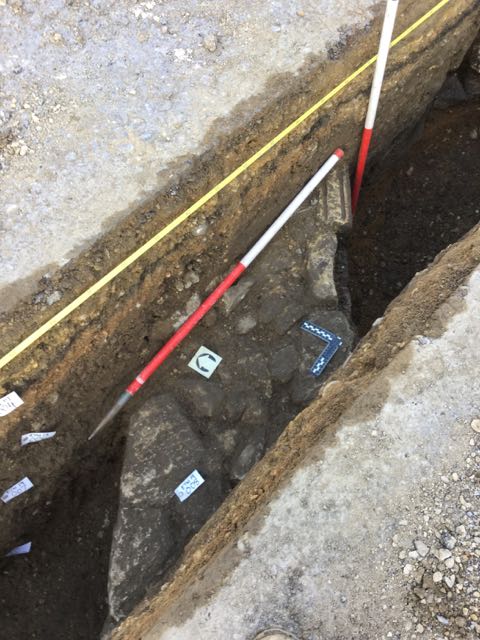
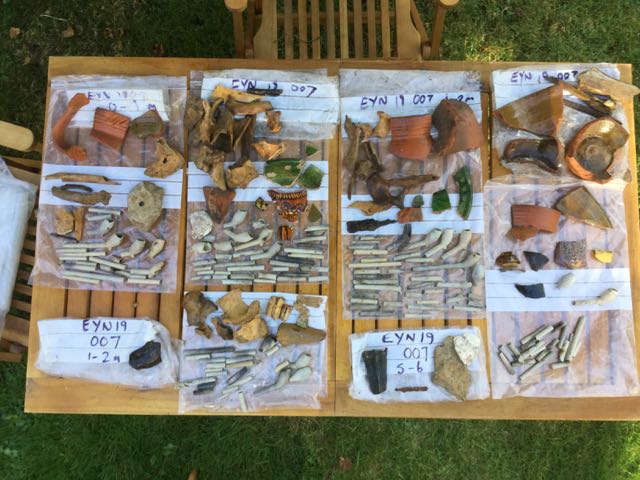
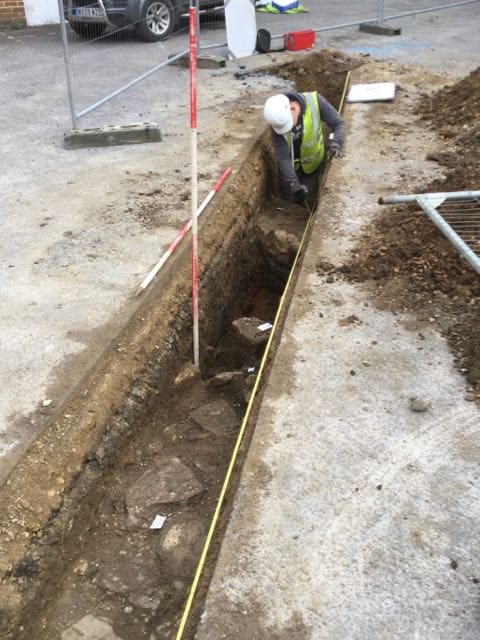
The newly discovered building plus bits of abbey. Some of the debris, probably from the seventeenth-century tavern. Adam squeezes in to excavated afore mentioned wall


The bridge. this was almost completely buried under rampant vegetation until we took a bill hook to it. Our other discovery, further down stream, a small wheel pit and seating, probably for a water pump.

A former cascade left dry by a re-working of the water supply.
Another project under development
has been next to the church of St. Lawrence in Eynsham where we had a
watching brief on a trench cut through the pub car park for a new
drain. Not terribly watery but a fine selection of late
seventeenth-century material excavated from a rubbish pit next to the
back wall of a major stone building again probably of the same period
incorporating as it did fragments from the demolished abbey.



The newly discovered building plus bits of abbey. Some of the debris, probably from the seventeenth-century tavern. Adam squeezes in to excavated afore mentioned wall
However, the highlight of the month was a two week trip to Rome, part holiday part work, so I would take a look at some key gardens plus water features but also examine some of their Roman antecedents said to have been such an important influence of later garden design. The highlight was probably the Villa d'Este, arguably the greatest Renaissance water garden of them all but as everyone knows, Rome is a city of fountains.
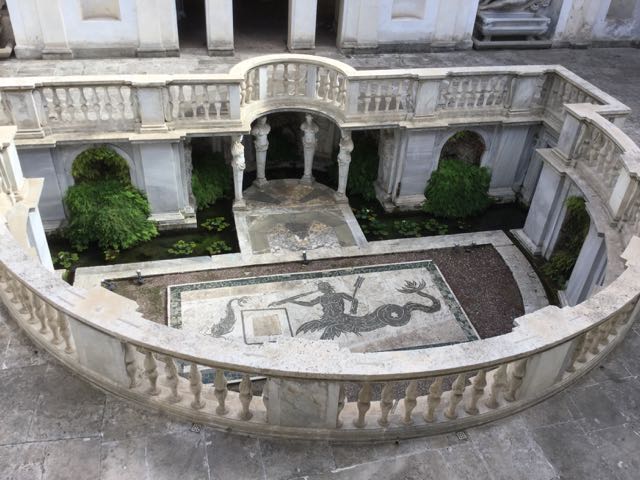
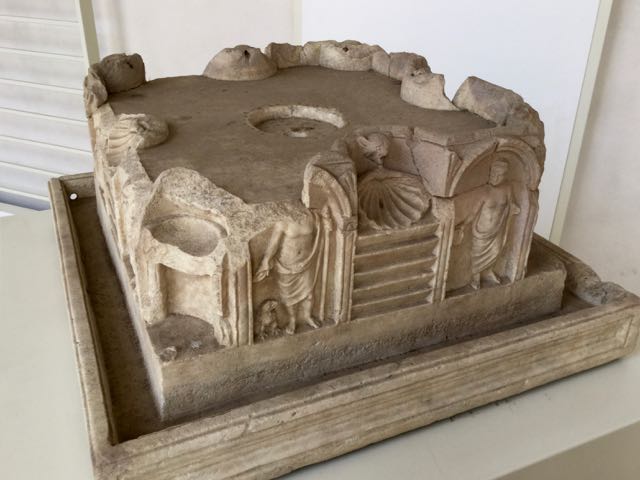
The Nymphaeum at the Villa Giulia. A charming little fountain at the Baths of Diocletian
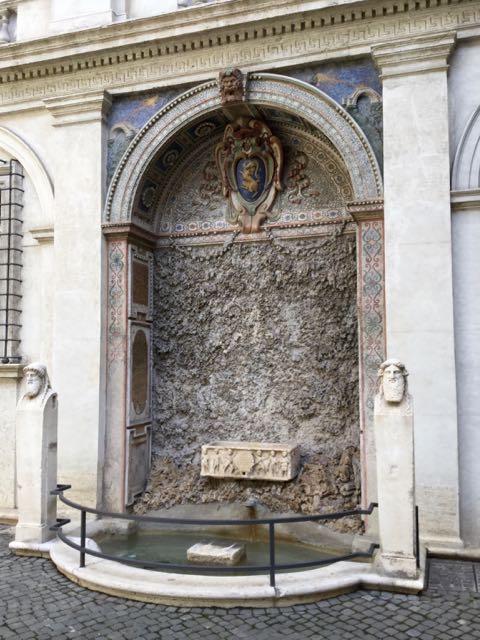
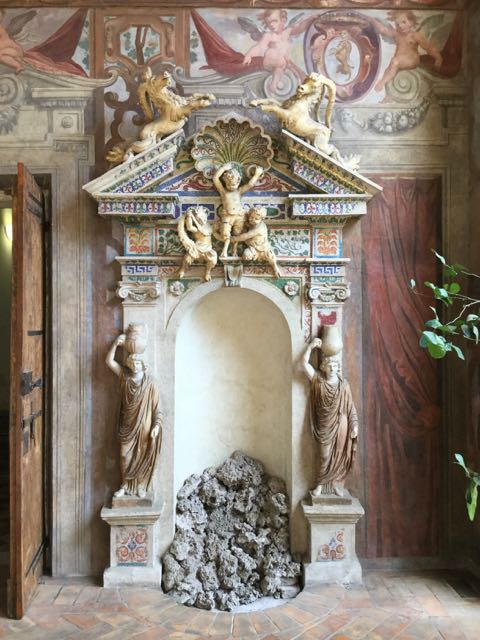
Palazzo Altemps, wall fountains, in the courtyard and the in the loggia
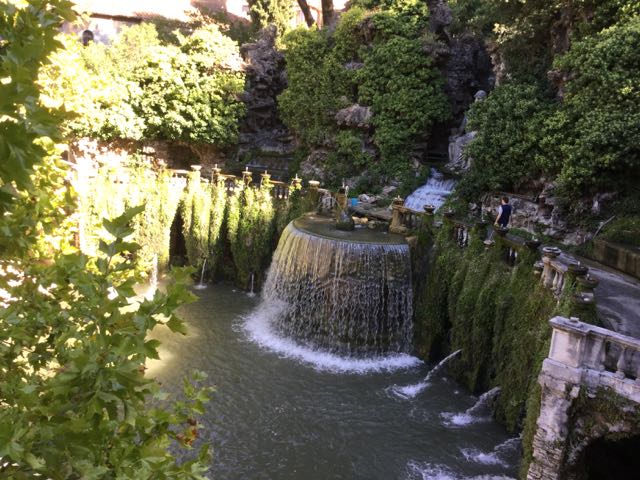
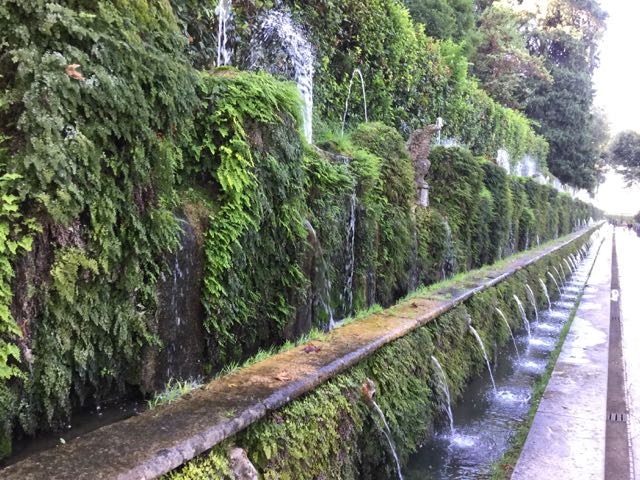
Villa d'Este: The massive Oval Fountain and the famed alleyway of a hundred fountains
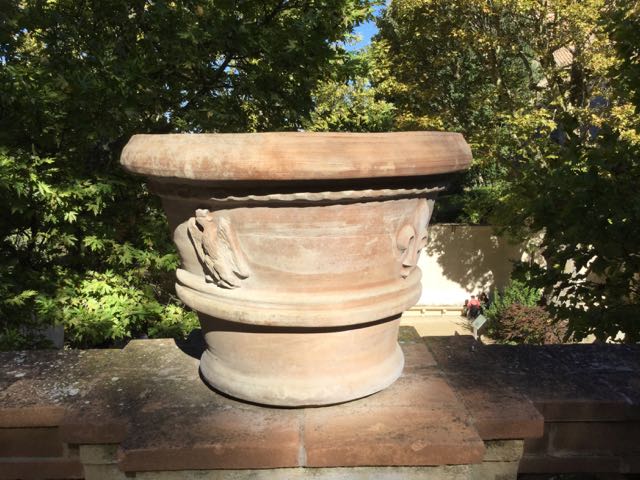
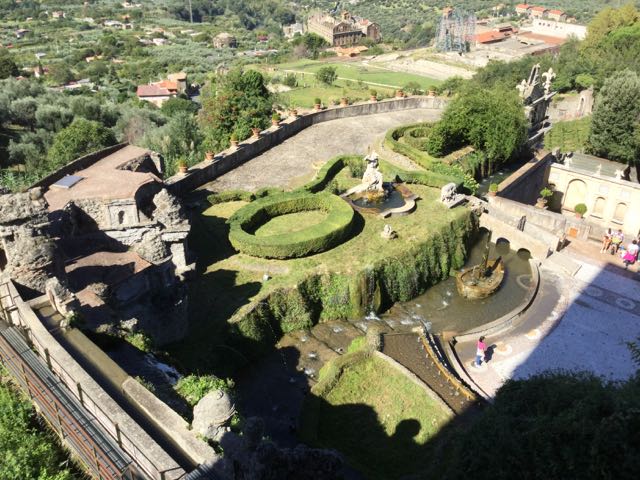
Villa d'Este: Recording garden pots now wherever I go. The rather peculiar Rometta
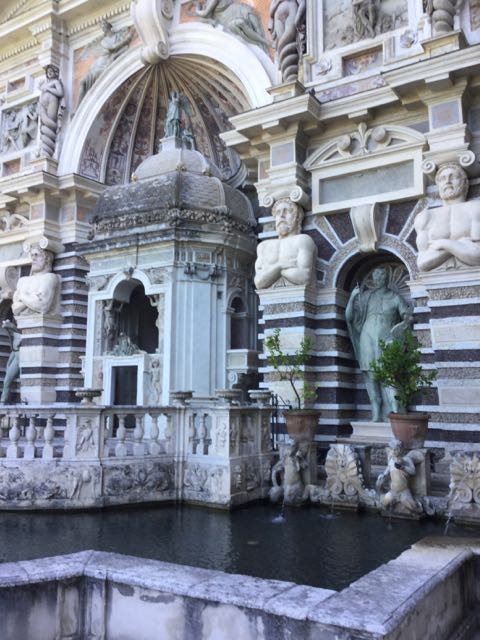
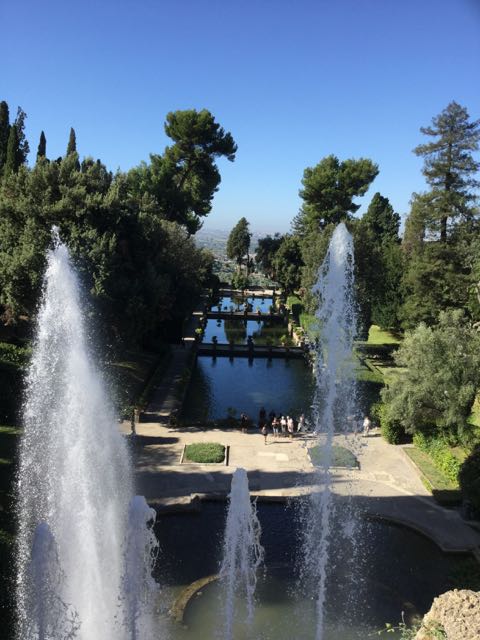
Villa d'Este: the water organ and the view out along the chain of fishponds
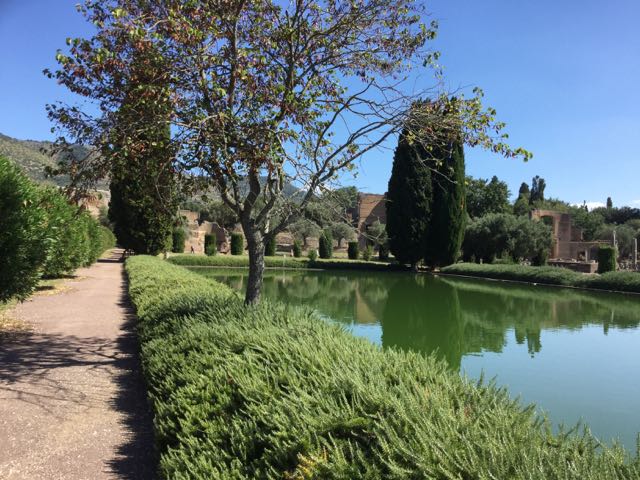
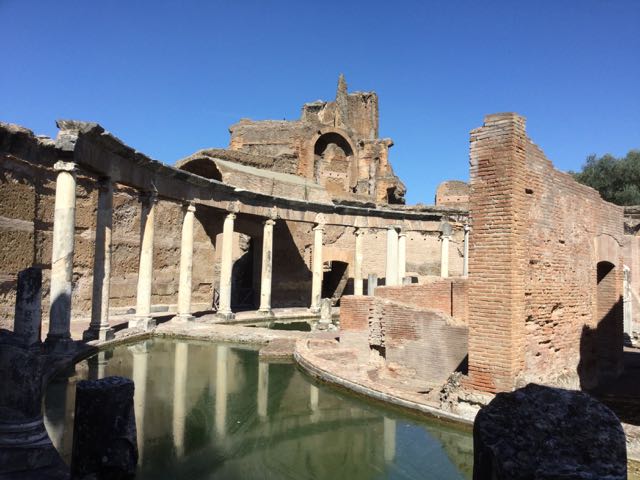
Still in Tivoli, on to Hadrian's Villa: a large pool called the Pelice looking towards the Hall of the Philosophers and Hadrian's get away from it all 'Maritime Theatre', not maritime and not a theatre but there you are.
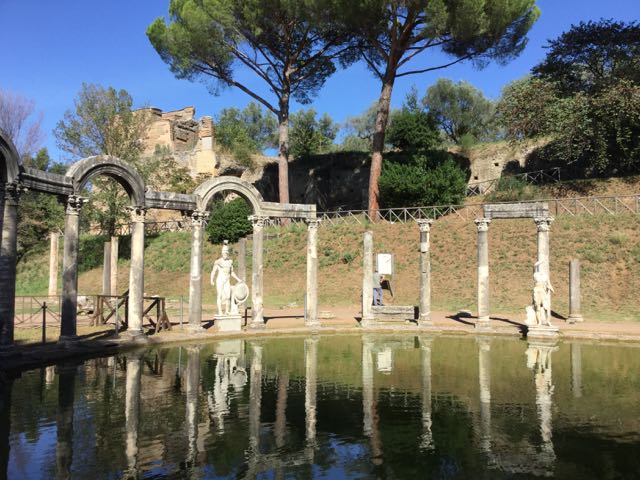
Hadrian's Villa: Another famous image, the Canopus
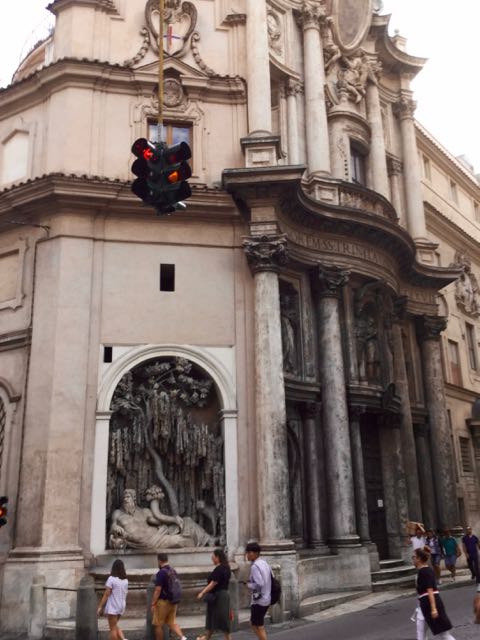
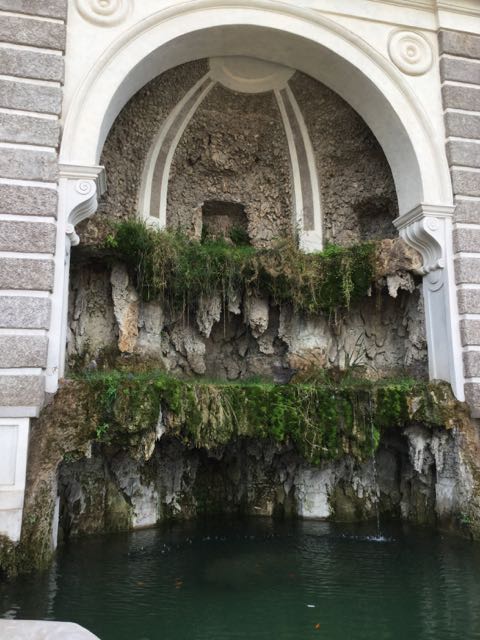
Back in Rome one of the four Quattro Fontane next to Bernini's famous wavy front to San Carlo. The Nymphaeum in the Farnese Gardens on the Palatine Hill
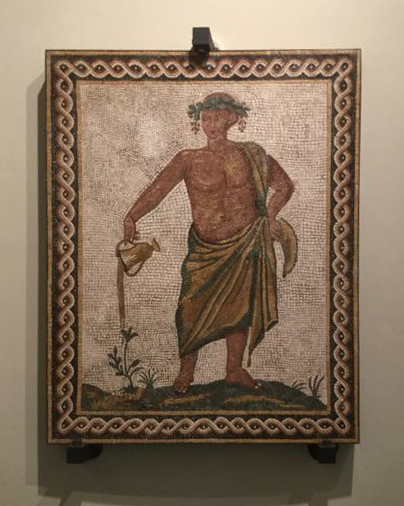
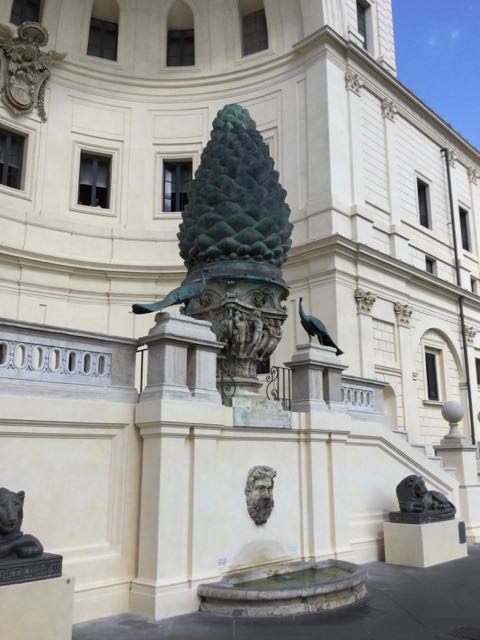
Couldn't resist this early piece of plant care in the Palazzo Massimo. The Cortile delle Pigna, a Roman fountain head based on a giant pine cone.
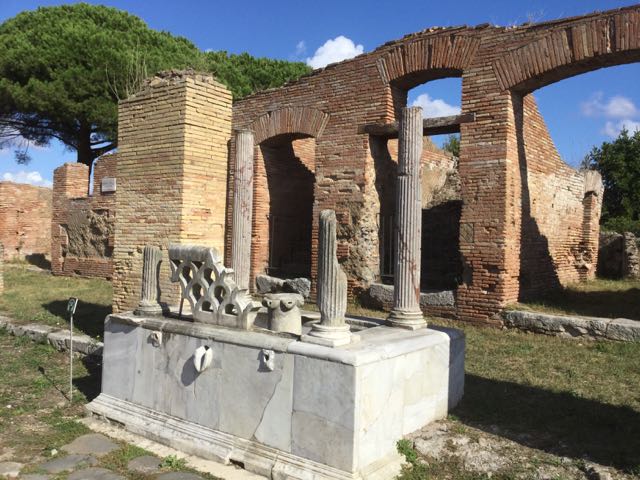
A beautiful little street fountain in Ostia Antica
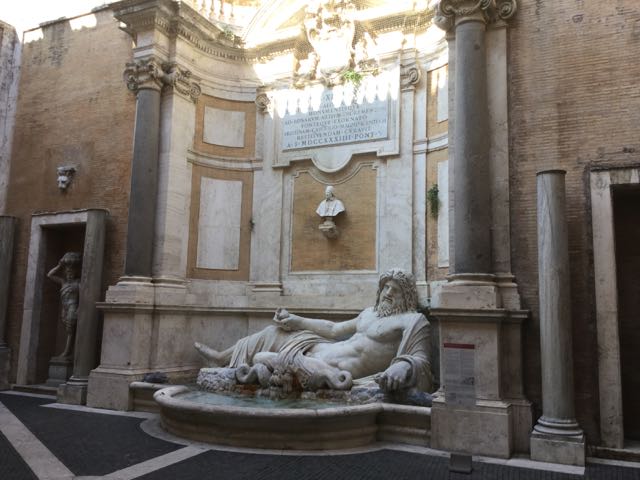
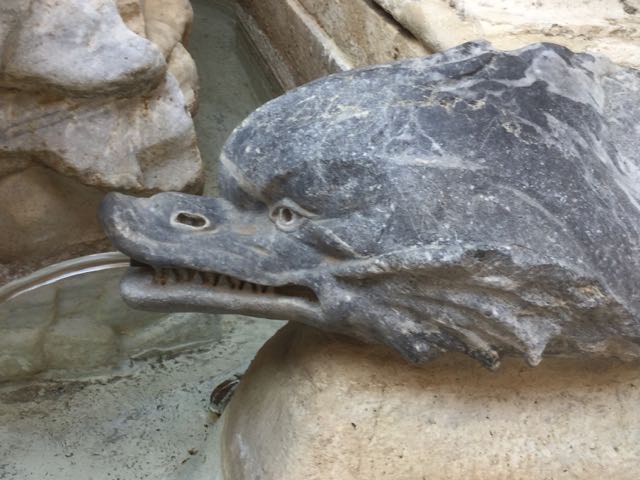
The Palazzo Nuovo on the Capitoline, the fountain of Marforio with detail of spouting dolphin
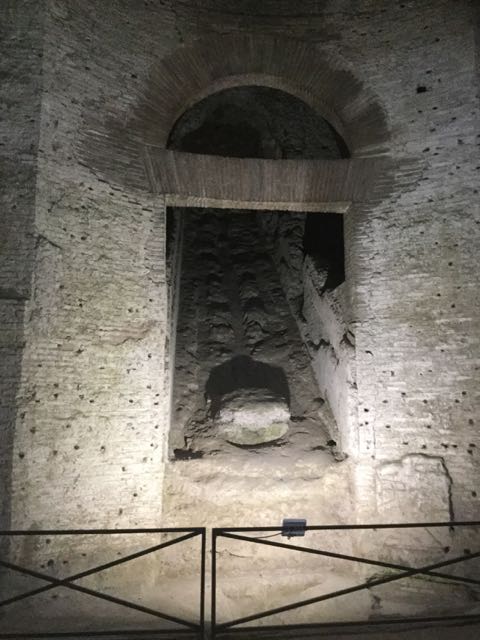
Cascade within the octagonal chamber in Nero's long buried palace, the Domus Aurea
... and then it was back to the UK and back to work.
But not to Hanwell, first of all
was a call to Stowe where the campaign to replace the statues of Apollo
and the Nine Muses is well underway with the digging of ten pits, 1.2m
square and 0.5m deep had to be done and not surprisingly we uncovered
archaeology including a new statue base on a different alignment
suggesting a tighter arc closer in to the Doric Arch than previously
thought and a massive stone wall presumably a left over of the
medieval/pre-garden settlement. It all had to be done in a bit of a
rush however as the truck coming to pour concrete trundled ever closer.
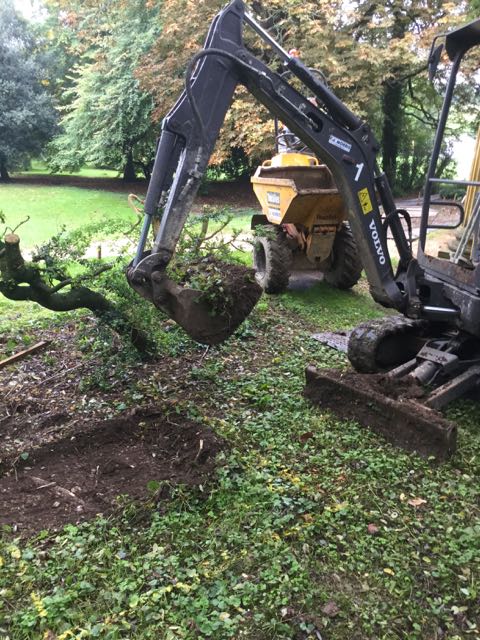
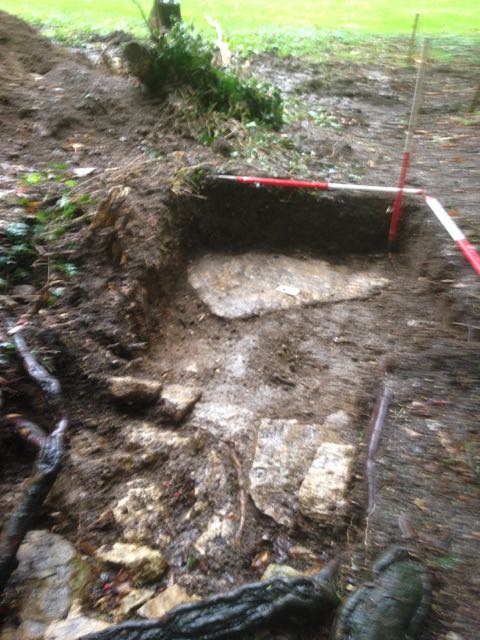

The digging for a foundation for a statue begins. Old statue base (foreground) even older statue base beyond Underneath a tree root a totally new old wall
... whilst Peter and Ian begin to lift Pot 25, it it one or three pots?
Only time will tell and here are some of the pots safely gathered in
whilst the rain starts to fall in earnest.


The digging for a foundation for a statue begins. Old statue base (foreground) even older statue base beyond Underneath a tree root a totally new old wall
Once work resumed at Hanwell we
thought we were in for smooth sailing in fine weather with several new
volunteers signed up to make their first visit. As it happened the week
went pretty well until around 11.00 a.m. on a Thursday morning and then
it just rained. Unfortunately we were already dealing with the
aftermath of what had apparently been a very wet couple of weeks whilst
we had been away enjoying the Roman sunshine so we had to have the pump
going pretty well full time. Despite all this we were able to carry on
clearing rubble some of which turned out to be extraordinarily
interesting from an 'are these bits of a fountain?' viewpoint and
lifting a number of pots, we were still not sure how many as we had yet
to work out which pieces went together...
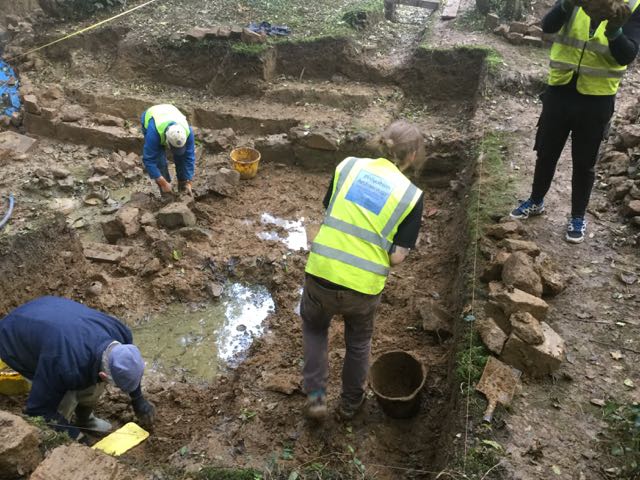
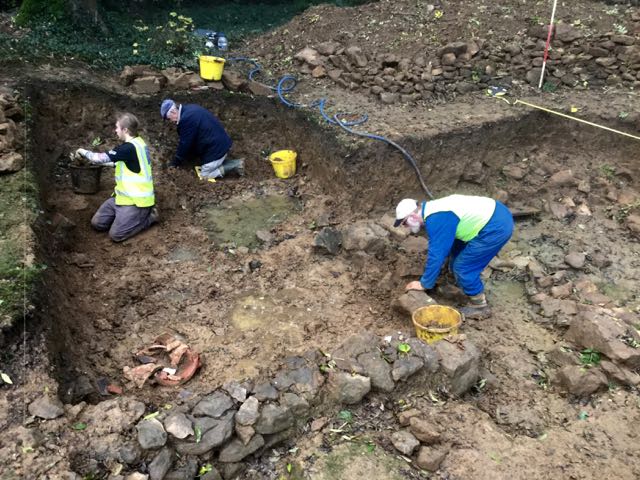
New hands George and Nathan help old hands Ian and Andries to shift rubble... and once it's cleared to clean up after themselves, well up to a point.
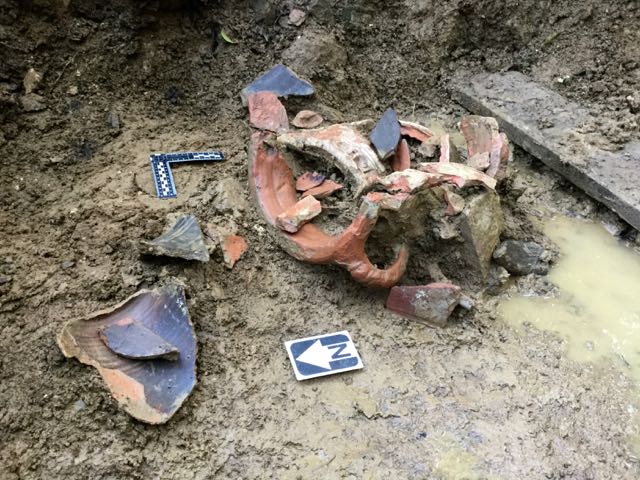
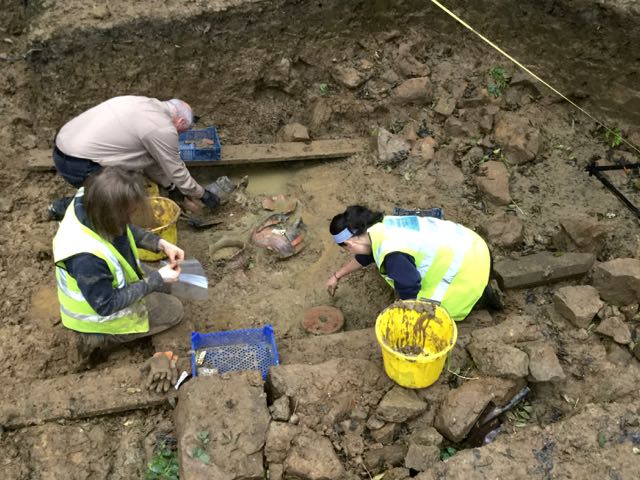
One of the first pots to come out, this photo illustrates rather dramatically how Pot 18 broke across a large block of stone in the moat, the following day Nathan and Mika excavate a couple of pot bases...
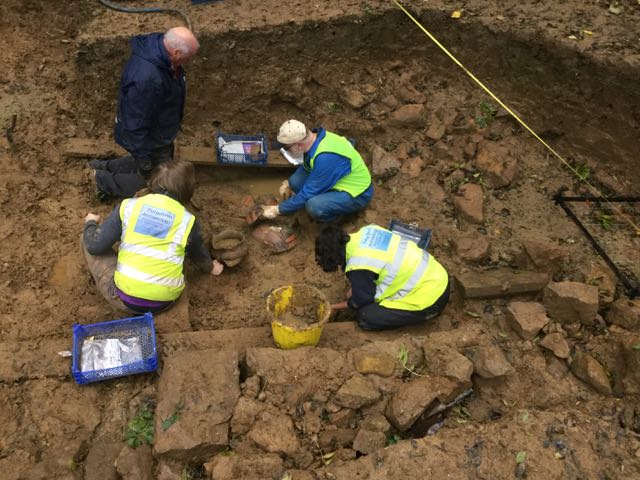
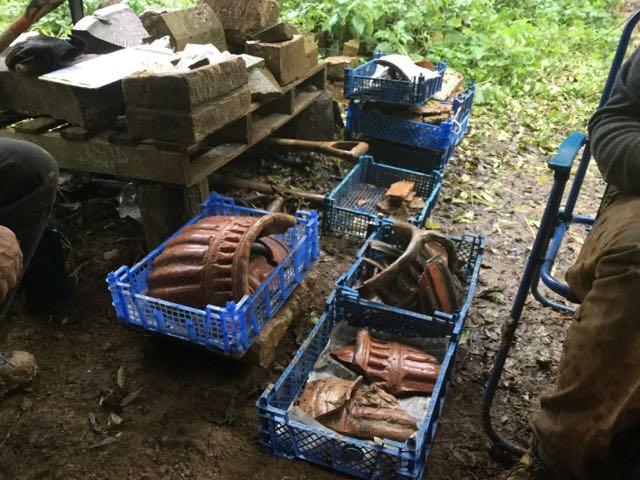 0
0


New hands George and Nathan help old hands Ian and Andries to shift rubble... and once it's cleared to clean up after themselves, well up to a point.


One of the first pots to come out, this photo illustrates rather dramatically how Pot 18 broke across a large block of stone in the moat, the following day Nathan and Mika excavate a couple of pot bases...

 0
0The last week in
October saw a big change as Peter, who had been helping with the finds,
decided to move on and so we shifted things round and moved some of the
finds processing facilities ( a gazebo, table and washing up bowls!)
down to the main site. An event which produced an unexpected bonus...
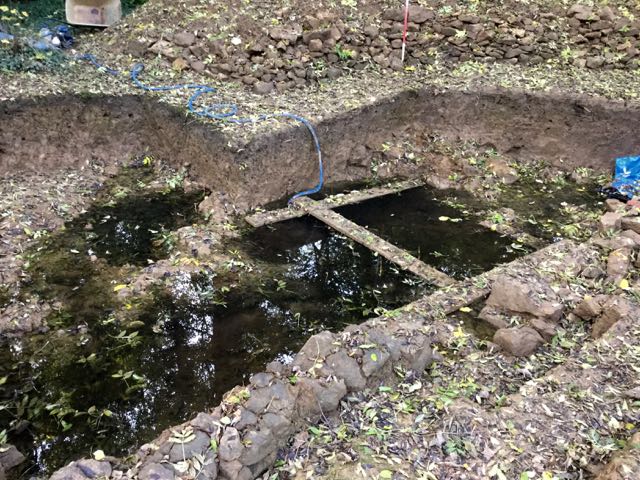
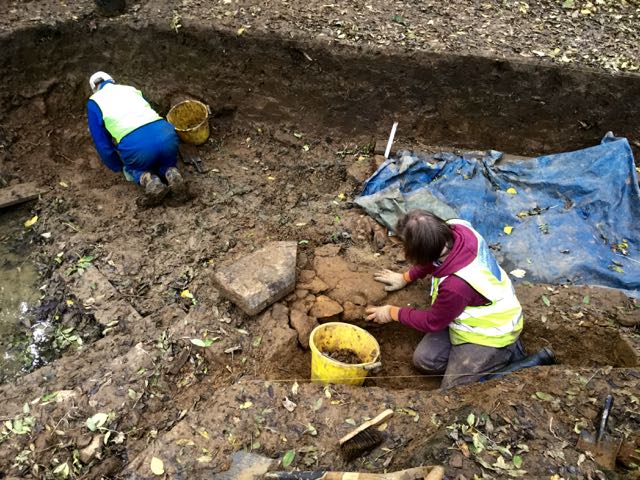
Wet at the start of the week, I expect this will now be the picture until next summer. Even so we pump out and carry on with Ian cleaning the section and Nathan cleaning the wall.
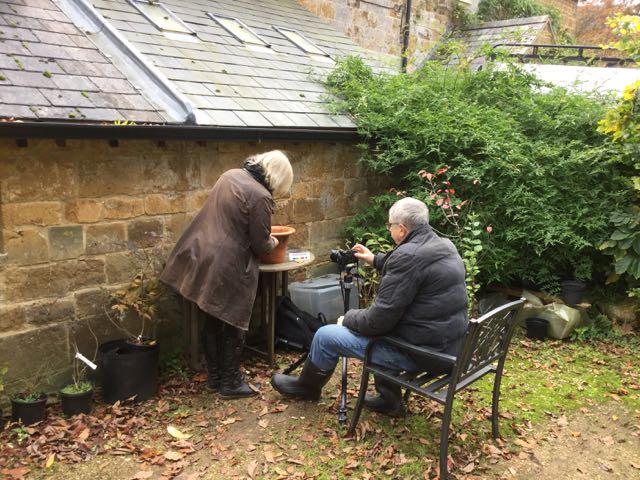
Up at the Coach house photographer Chris kindly came over and continued building our photographic record of the reconstructed pots.
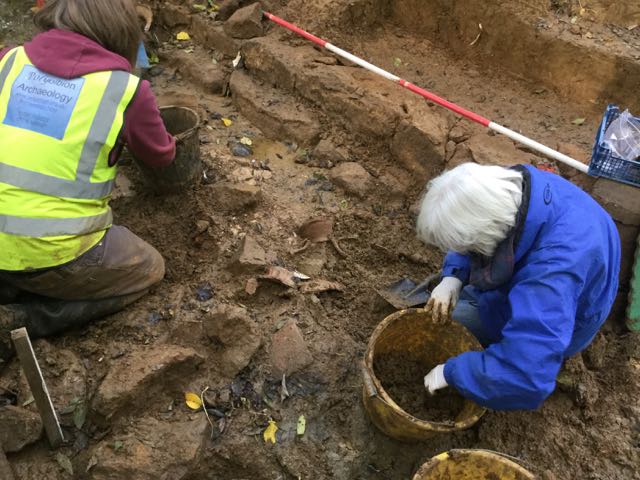
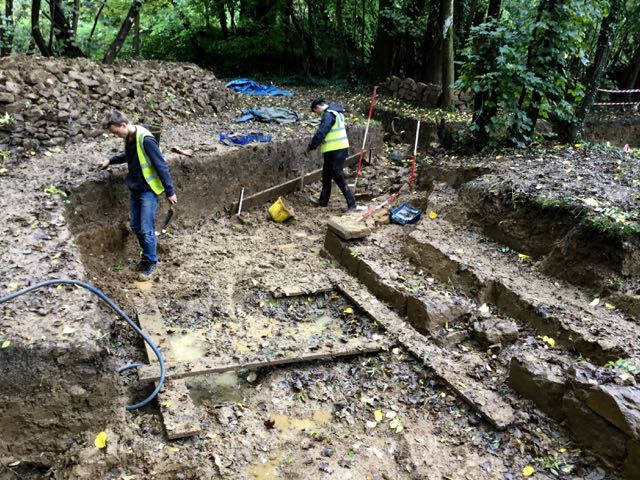
Down in the mud the other Chris and Nathan continued lifting pots so by the end of the week George and Jack could certify the area free of finds... well almost.

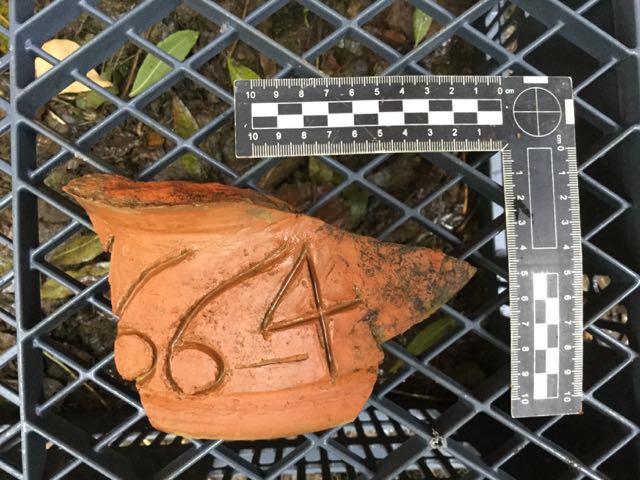
So the new finds department in action and bingo! or perhaps beano! a most remarkable find. Pot 18 was dated to 1664. This is such a crucial piece of evidence that I have barely begun to think through the implications but they are huge.